Shrub cinquefoil: description of varieties and cultivation features
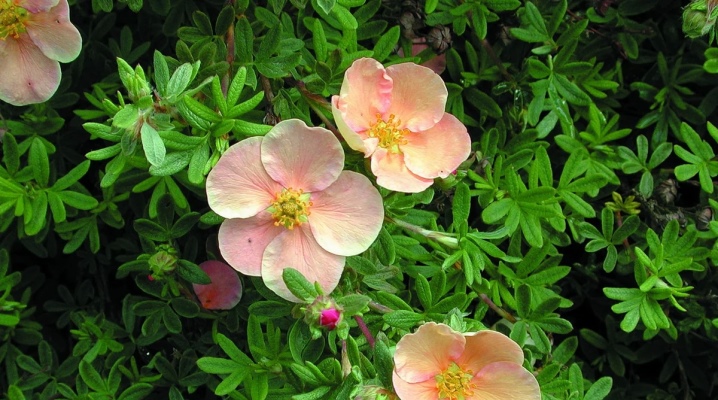
Shrub cinquefoil is very much appreciated by both gardeners and landscape designers. It's all about her original and attractive appearance. The bush is covered with bright and numerous buds that look very impressive and attract attention. Most often they have a deep yellow tint, but this is not a prerequisite. Some people choose to grow this quinfoil with white, orange, red and pink flowers.
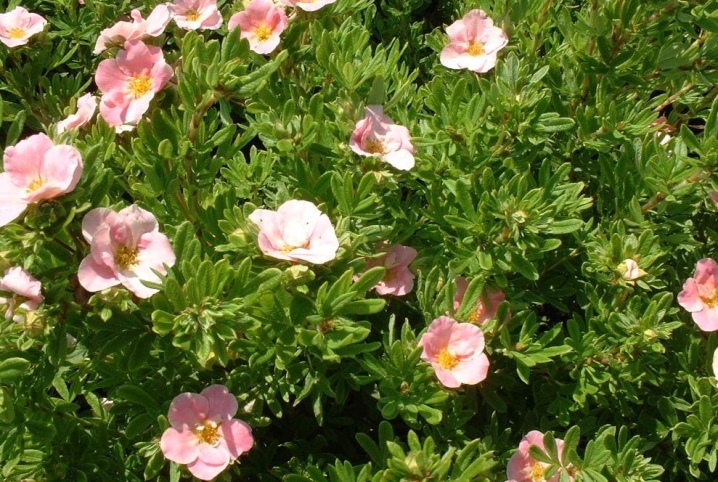
General characteristics
Another name for Shrub Potentilla is Kuril tea. This was facilitated by the fact that in the Kuriles, Kamchatka, as well as in Siberia, the shrub is considered a surrogate for tea, since it contains a significant amount of vitamin C... The shape of the leaves allows us to consider it a five-leafed leaf. Gardeners greatly appreciate the shrub for its long flowering period. If the plant feels comfortable, the first buds will appear on it at the very beginning of summer, and will fade only with the onset of the first cold weather. Some people compare the cinquefoil to a luxurious fabric, the surface of which sways easily in the wind. It is indispensable in the design of a resting corner.



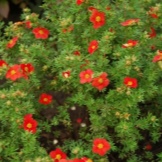
Shrub cinquefoil can reach a height of 1.5 meters. It branches very strongly and looks voluminous. The shoots are rather thin, gathering in a dense crown, most often in the form of a hemisphere or ball. Usually it is wide and not too tall, which looks very unusual and attracts attention. The crown of this shrub is often called openwork, due to the fact that the leaves have an original shape, dividing into several parts, there can be from 3 to 7 of them. Their color is pale green, with a slight tint of silver. The average diameter of the buds is from 3 to 5 centimeters. They have 5 petals surrounding a core with 30 stamens.
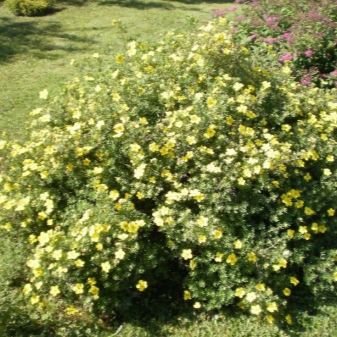
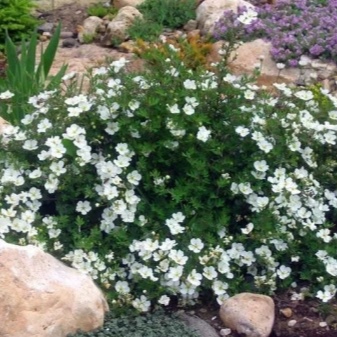
The buds are located along the entire shoot. Dissolving, they envelop the bush with bright garlands, which look very favorably against the backdrop of greenery. It should be noted that during the flowering period, the buds are interchangeable. This means that when some of them bear fruit, others are just beginning to bloom. Therefore, it sometimes happens that Potentilla keeps flowers until the first snow.
It should be noted that this shrub is highly prized in folk medicine. It has many useful properties, but there are also contraindications. The leaves contain many beneficial constituents such as carotene, essential oils, vitamin C, and ascorbic acid. Cinquefoil is great for decoctions. They are able to strengthen the immune system, have a beneficial effect on digestion, and normalize the blood composition. However, users need to take into account that if any of the components are intolerant, it is contraindicated to take such decoctions.
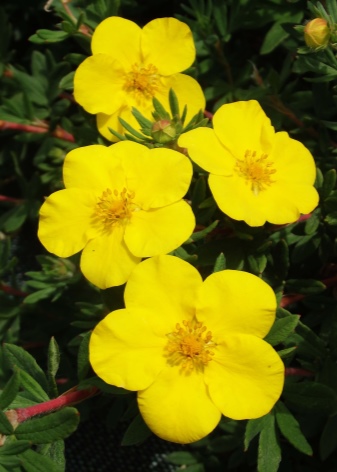
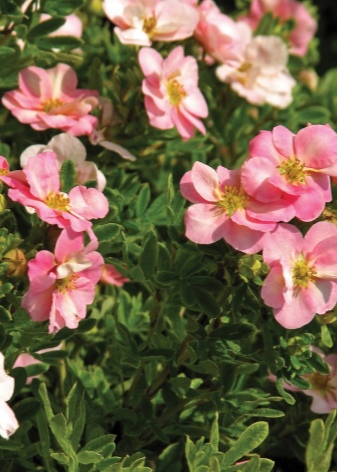
Overview of varieties
Work on the development of new varieties of Potentilla is carried out at the present time, despite the fact that there are still a sufficient number of species. They differ in various parameters, for example, in color, level of frost resistance, size. These indicators must be taken into account when choosing a plant for a site. Each of the varieties has its own advantages and disadvantages, so they all have their own lovers. Let's consider the most popular ones.
- Variety "Abbotswood" is a shrub that grows up to about 1 meter in height.In this case, the crown can be up to 130 centimeters wide. Flowering is quite lush and lasts until mid-autumn, the bush turns out to be covered with delicate snow-white buds about 3 centimeters in diameter. This variety is drought tolerant, while it loves the sun very much. However, gardeners believe that it can grow well in the shade. The soil must be well-drained. Such a shrub can grow up to 20 centimeters in height and a little more in width in a year.
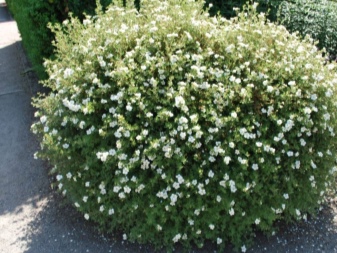
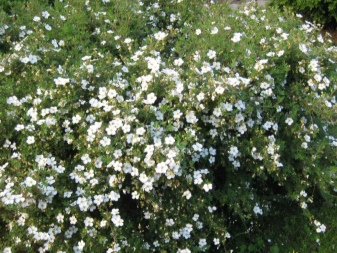
- Cinquefoil "Deidown" can have a height of 70 centimeters and a crown width 2 times larger. The green bush is adorned with rusty red buds that appear in May and finish blooming in October.
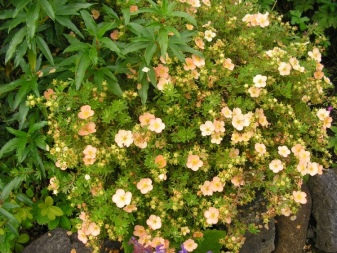
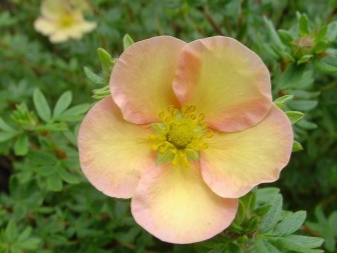
- Variety "Hoples Orange" refers to undersized, grows up to 50 centimeters, and the width of the crown can reach 1 meter. The buds, as the name suggests, have a rich orange hue. The flowering period is from May to October.
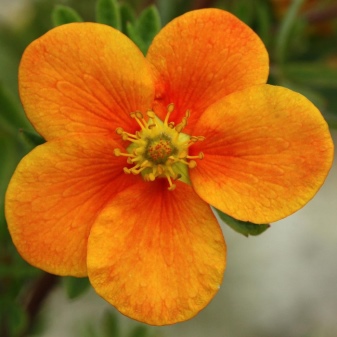
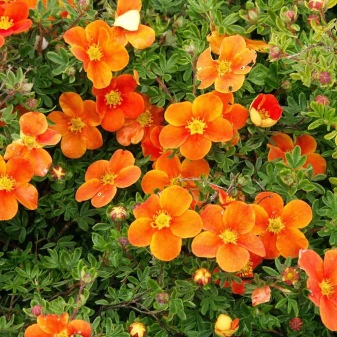
- "Goldstar" in translation means "golden stars". The flowers are quite large, up to 5 centimeters, open in the middle of summer and cover the bush abundantly. The maximum height is 80 centimeters. This variety looks very impressive.
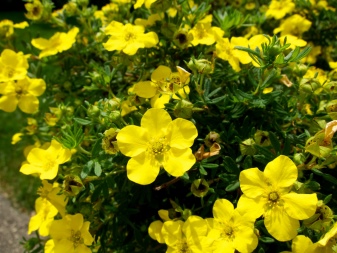

- Variety "Princess" also has a height of 80 cm. It is distinguished by active growth, adding 10 centimeters in height annually. The buds are large, pink in color, reaching a size of 5 centimeters. The bushes are not afraid of the bright sun and cannot stand the shade.
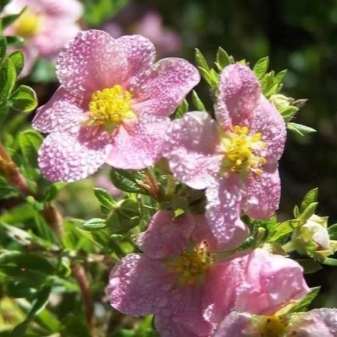
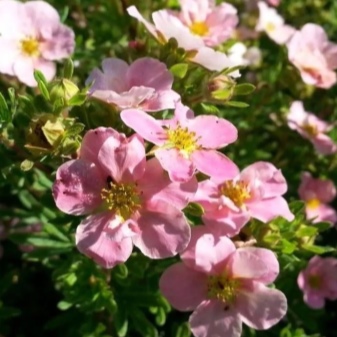
- Variety "Primrose Beauty" differs in small cream-colored flowers. The bush itself reaches a height of 1.2 meters and has the shape of a ball.
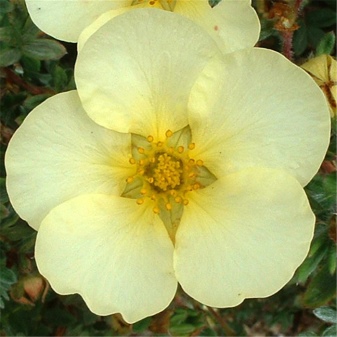

- Bush cinquefoil "Kobold" it has bright ivory-colored buds. It is called dwarf, since the maximum height is 60 centimeters, and the crown diameter is 2 times larger. The bushes grow very quickly and therefore require regular pruning. Flowering begins in June and ends in September. The leaves are distinguished by a delicate light green hue.
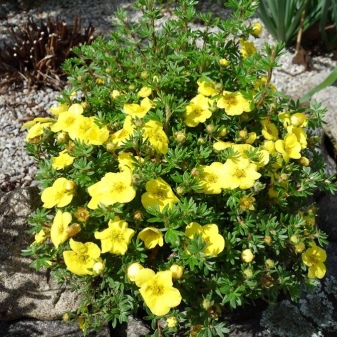
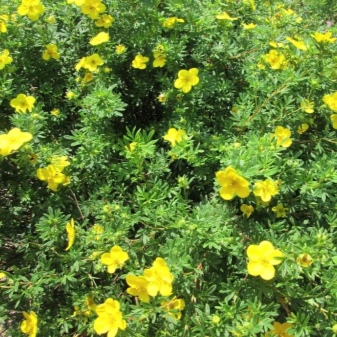
- Description of the variety "Tangerine" you should start small. The height of the bushes is only 50 centimeters, and the diameter is about 60 centimeters, they spread along the ground. The leaves are green with a silvery sheen. The flowers are orange, with a copper tint appearing in the shade. Partial shade is best suited for planting, where the plants will feel most comfortable.

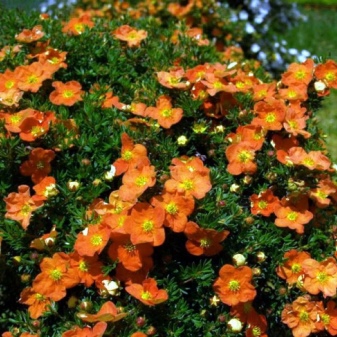
Since the shrub has a small height, it is easily covered with snow for the winter, but if the shoots still freeze, they can be easily restored by pruning in the spring.
- Cinquefoil "Friedham" has a height of up to 1.2 meters and a rounded crown. The leaves are green, with a silvery tinge. The shrub is crowned with large flowers of a golden yellow color (up to 5 centimeters). Flowering begins in June and ends in mid-autumn.
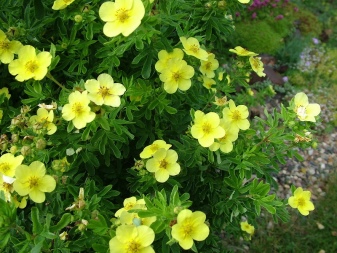

- Variety "Mango tango" not too high, only up to 80 centimeters. At the same time, the crown is spread over 1.5 meters. The shrub is frost-hardy, tolerates drought well, but feels uncomfortable in dry air. It will grow well in moderately moist soils rich in useful elements. He also loves the sun, but can be placed in light partial shade. The leaves are pale green in color and have a slight silvery tint.
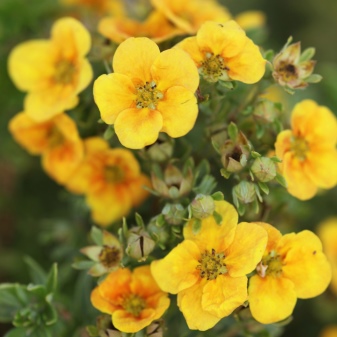
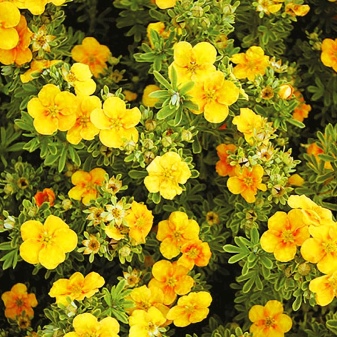
- Shrub variety "Belissimo" also belongs to the dwarf, its height is no more than 30 centimeters. At the same time, the branches are decorated with large pink flowers (up to 5 centimeters in diameter). The flowering period is long and ends in October. The leaves darken over time, towards the end of summer a silver tint appears on them.

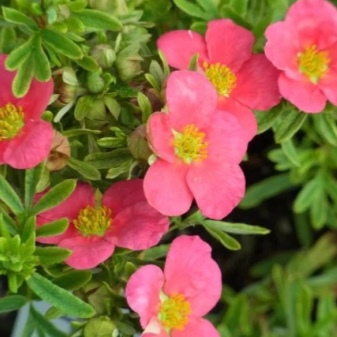
Landing rules
Before planting Potentilla, you need to decide on the month when the event is planned, as well as the location. It should be noted that the plant likes well-lit areas, but direct sunlight should be avoided... Exposure to the sun leads to burnout, as a result of which the decorative qualities of the shrub will be lost.A place with a rarefied light will be the most successful; it is also impossible to plant it in the shade, since there it will weaken, it will be more susceptible to disease. This plant can be planted on any type of soil, but do not forget about additional feeding.
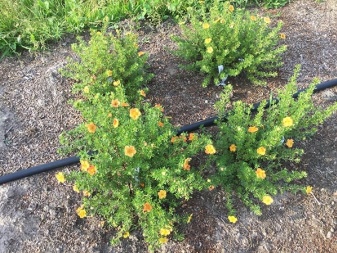
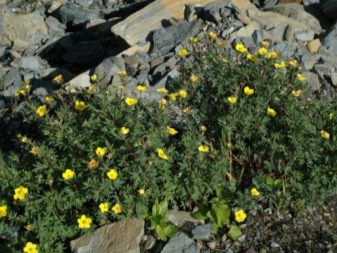
In this case, loamy soil will be the best option. Soil composition can be an important issue when growing Potentilla, which has pink buds.
Planting time should be selected taking into account what seedlings are available. If their root system is open, the procedure can begin in September and continue until the end of April. If the root system is closed, that is, the plant is in a pot, you can plant it at any time, as long as the soil is not cold. Plants are most often winter-hardy, especially large ones, they are not afraid of a cold snap to -45 degrees. This means that frost is not a problem when planting.
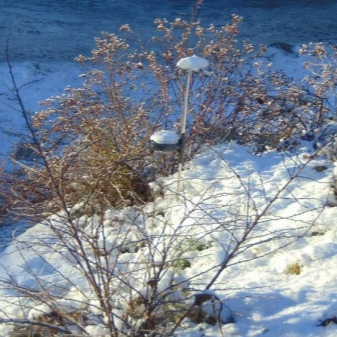
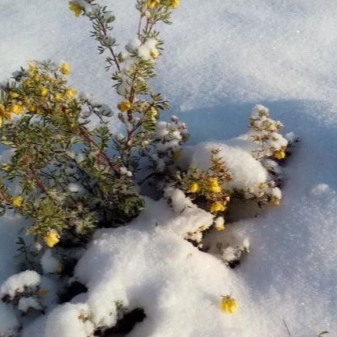
The seat must be thoroughly and deeply loosened. If you plan to make a hedge, you need to place 3 seedlings per 1 running meter. Cinquefoil, covering the soil, is located in the amount of 5 pieces per 1 sq. m. When planting, it must be borne in mind that Potentilla has a superficial root system. This means that the depth of the landing pits should not exceed 50 centimeters. The distance between them ranges from 30 to 80 centimeters, depending on the variety.

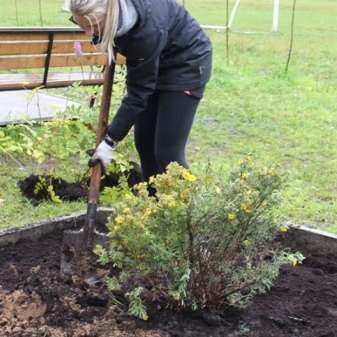
It is necessary to take care of the organization of the drainage system. Crushed stone or broken brick is perfect. The layer is covered with earth and humus, and a seedling is placed at the top. The root collar must be positioned so that it is above the soil level. Failure to comply with this condition can lead to serious diseases and lack of flowering. The soil mixture must be mixed with wood ash or mineral fertilizers. After planting, the plant is watered abundantly, and then it is necessary to mulch the soil. It is especially important to maintain its moisture content in the first month after planting, this must be carefully monitored, excluding drying out.


Care features
It is not difficult to care for the bush, which is why lazy and busy gardeners appreciate it. However, even with minimal maintenance, the appearance remains at its best. To protect the plant from diseases, it is necessary to periodically carry out processing using a weak solution of potassium permanganate or boric acid. Also, don't forget about watering, feeding and cutting. Despite the fact that the shrub is unpretentious, it loves moisture very much. It needs to be watered, especially in hot weather.

Gardeners recommend to carry out the procedure every 3-4 days, each instance needs about 5 liters of liquid. Its temperature is not critical.
Potassium-phosphorus feeding is very useful for Potentilla. The mixture can be prepared both independently and purchased in specialized stores. The first time fertilization is applied in the spring, when the buds awaken. In the spring, the first pruning is carried out. In its course, dry peduncles are removed. If for some reason it did not work out, after awakening the kidneys, the main pruning is carried out. There is no need to rush with the procedure, since after a cold winter the bush comes out of hibernation for a long time. In the fall, pruning is carried out again. The crown is given the required shape, excess and dry branches are removed.
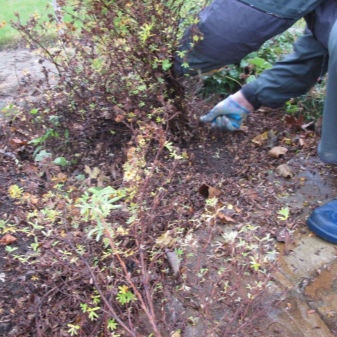
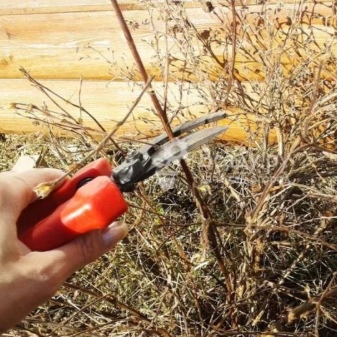
Important! To abandon the first pruning, you can remove the peduncles in the fall, but not earlier than the first frosts come.
Reproduction methods
You can propagate the culture using seeds, cuttings and dividing the bush. Let's consider these options in more detail.

Seeds
Growing from seed at home requires patience from the gardener. This method is quite lengthy. Seeds are sown in specially prepared containers with a substrate that must be constantly moist. However, excess moisture can be harmful. Saplings are grown only at home, as they cannot stand the cold. They should only be placed in open ground next spring.
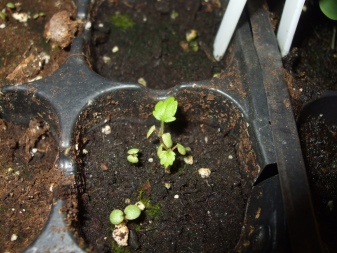
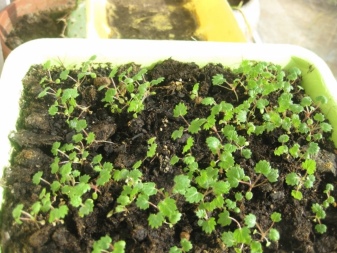
Cuttings
Reproduction using cuttings is an easier method, and in most cases it is successful. In the summer, seedlings are grown from the shoots, which happens as follows:
- pieces of about 10 centimeters with a heel are separated from the side shoots, which are planted in a specially prepared soil mixture consisting of sand and peat, taken in equal proportions;
- the cuttings must be treated with a rooting composition and removed to a shaded place, otherwise the buds will begin to germinate before the roots appear.
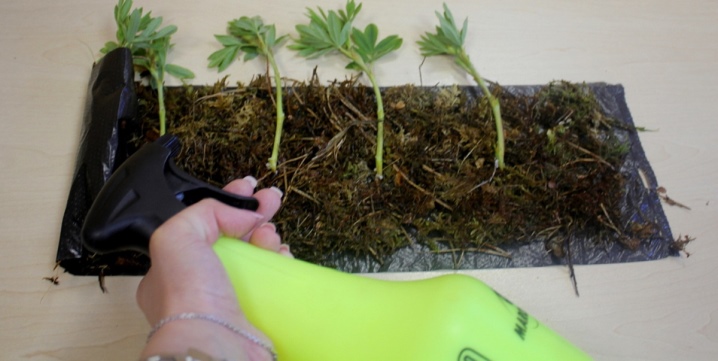
The room where the seedlings are located must be regularly ventilated, and with the onset of winter, it is worth lowering the temperature there to the permissible +5 degrees. In the spring, transplantation under the film is performed for a period of 1 year. Seedlings will need to be watered regularly, and planted in open ground in the fall. If the variety is vigorous, cuttings can also be cut in winter. In this case, they must be stored in a cold room. To exclude the possibility of drying out, it is better to dig in the seedlings with earth. When the growing season ends, they can be planted in a permanent place.
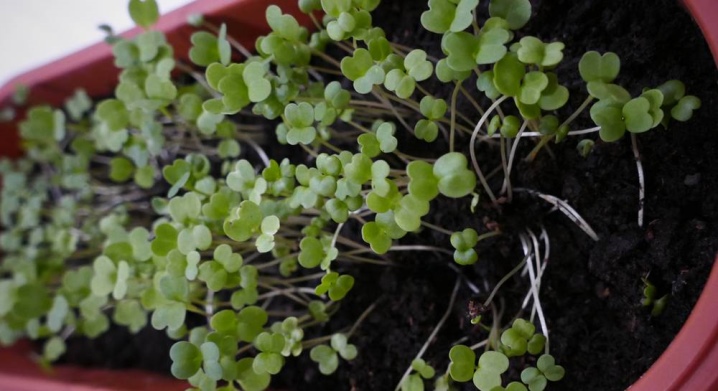
By dividing the bush
The fastest way to propagate cinquefoil is by dividing the bush. For this, the root system is dug in, the plant is taken out of the ground. A bush is cut into pieces with a sharp knife, after which it is planted in different places. The main condition is the presence of roots in each part of Potentilla. Transplants should be avoided.
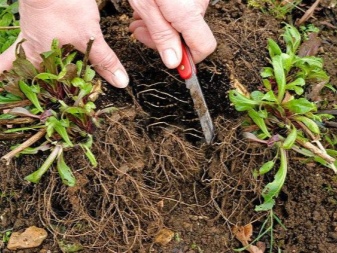

Diseases and pests
In this regard, gardeners do not need to worry too much. The culture is not only easy to plant and care for, but also immune to many diseases and pests. If the bush does not bloom or dries, there may be few reasons. The main problem of this culture is a disease such as rust. It must be said that it often affects pine trees, therefore it is not recommended to place Potentilla in the immediate vicinity. The disease is expressed by yellow-brown spots on the leaves that have a purple tint. With significant damage, the foliage curls and dries. Treatment with a composition containing manganese and boron, as well as sulfur, will help.
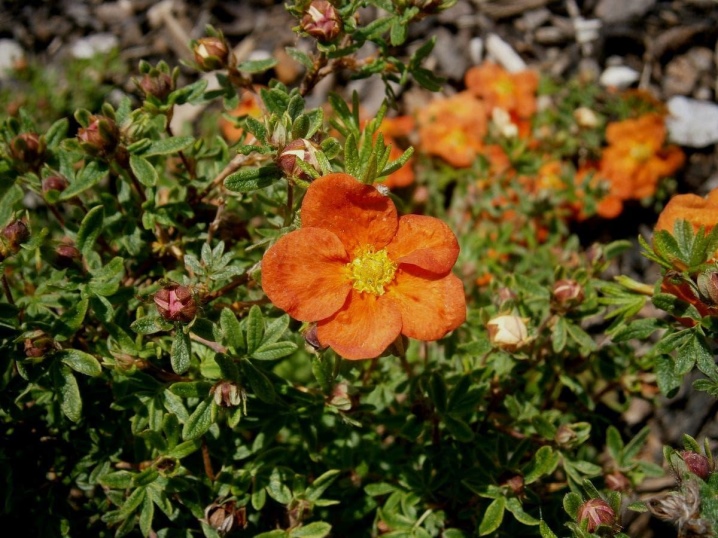
Use in landscape design
Cinquefoil is planted in the garden or on the plot in order to create a unique and amazing atmosphere. The appearance of the shrub depends on the variety. Its shape can be pillow-shaped or spherical. Landscape designers are happy to use cinquefoil both in single and in group compositions. It is suitable for decorating a curb or hedge.
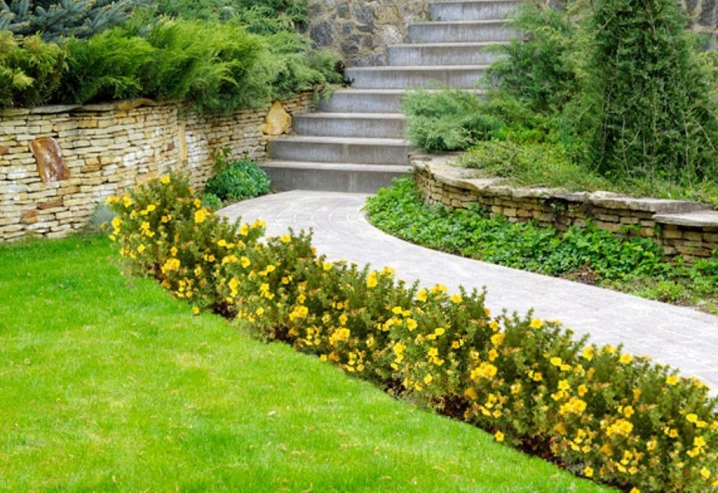
Gardeners note that Potentilla is easy to cut. In addition, it blooms for a long time, and you can choose any shape and height. For alpine slides, stunted shrubs that will creep along the ground are perfect. And also they look advantageous on the banks of reservoirs. Tall varieties look best in the form of hedges, as well as singly on the lawn.
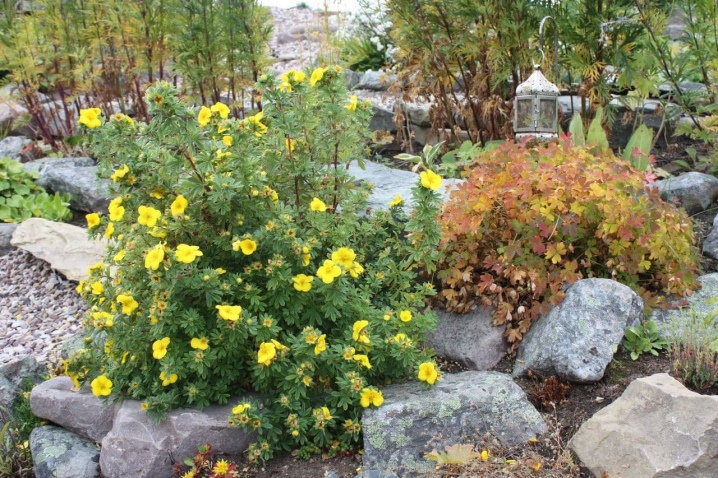
As for the neighborhood, here you need to focus on the size and color. A good option is, for example, barberry, hosts and badans. Potentilla of different varieties will also be perfectly combined with each other. For single plantings, you need to take care of the appearance of the lawn. It can be made, for example, from small pebbles.

Cinquefoil can be planted along buildings. She will decorate a wooden gazebo. It is also combined with various trees, both coniferous and deciduous, as well as fruit trees. In addition, the lifespan of the plant is about 25 years, respectively, the gardener does not have to worry about the attractive appearance of his site for a long time.
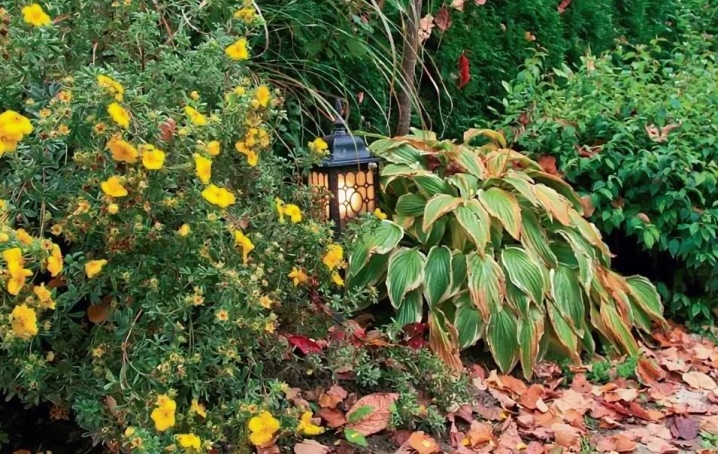
For information on how to properly care for the shrub cinquefoil, see the next video.



































































The comment was sent successfully.